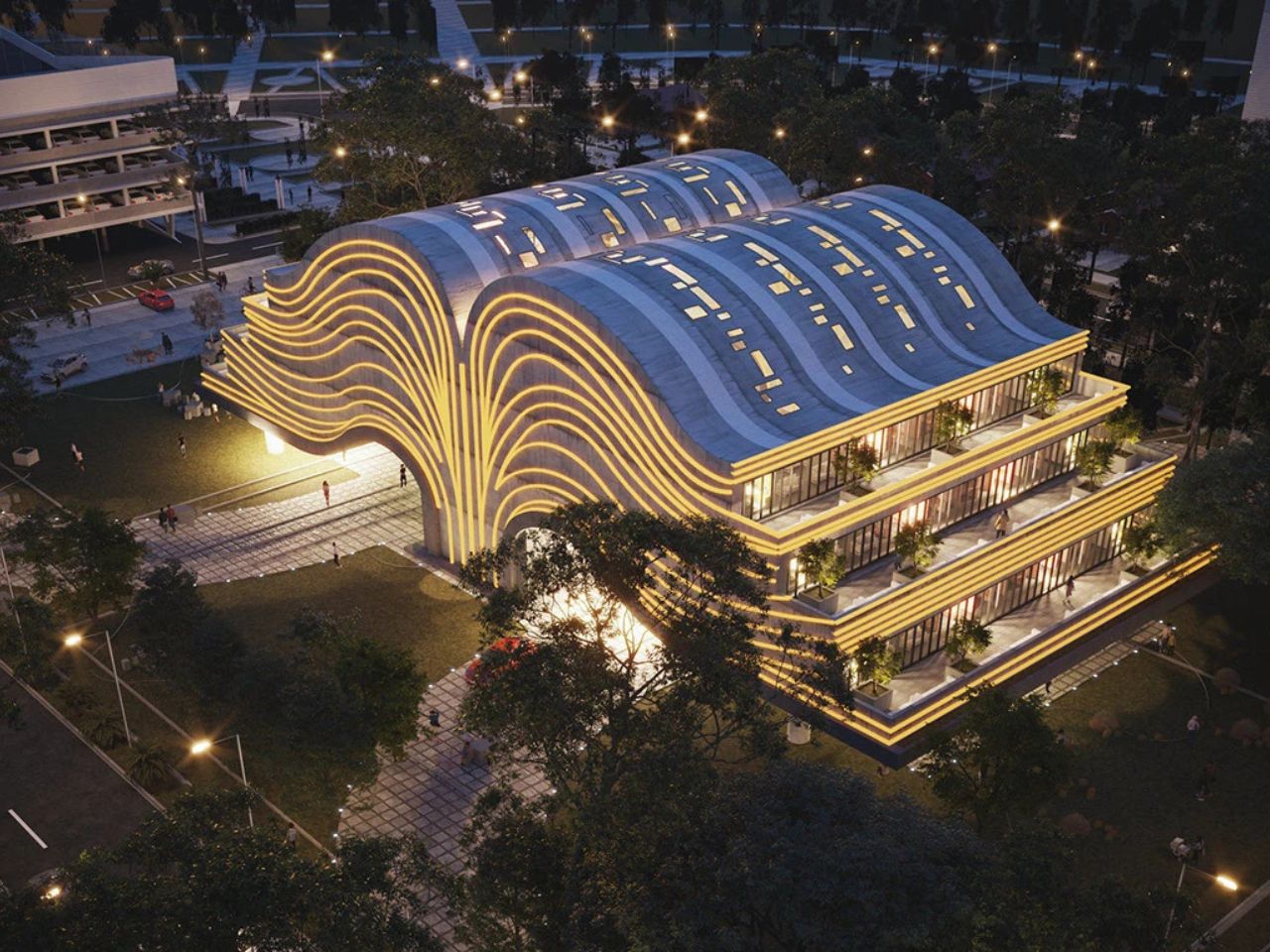When the designer envisioned this futuristic public library, the intent was not simply to create a building, but to craft a living, breathing celebration of books. More than a repository of knowledge, this space was imagined as an environment that inspires awe, invites curiosity, and offers tranquility, a true sanctuary for the mind.
The concept takes the instantly recognizable form of an open book, a symbol as timeless as the act of reading itself. This was no accidental metaphor; the open book represents the openness of sharing knowledge, the free flow of ideas, and the boundless possibilities that learning provides. Its sweeping, curved forms mimic the gentle turning of pages in motion, while illuminated lines on the roof suggest written text, creating the illusion that the story comes alive even from a distance.
Designer: Thilina Liyanage
The library’s ground floor is supported by a bold cantilever concrete system, lending the entire structure a sense of weightlessness and modern elegance. This design choice not only reinforces the futuristic vision but also opens up expansive spaces where readers can move freely, sit comfortably, and lose themselves in their thoughts without distraction. The architecture’s fluid interplay with natural light enriches this openness, wrapping visitors in a warm and inviting atmosphere.
The “pages” of the open book are in fact the different floors of the library. Each is crafted with precision and includes balcony spaces for visitors to step outside, enjoy sweeping views of the city, and breathe in the fresh air, extending the experience of reading beyond four walls. On the ground, outdoor lounge areas with comfortable couches offer a chance to read under natural light or simply relax in the breeze.
The roof continues the poetic metaphor, subtle openings allow daylight to flood into the interior while maintaining the striking exterior aesthetic. In daylight, the form reads like letters inscribed on an enormous book; at night, lighting accents these lines, dramatically highlighting the architecture’s contours.
From the front elevation, the book-like structure takes on a second layer of meaning; its silhouette resembles a tree, a universal emblem of growth, knowledge, and life. This thoughtful layering of symbolism ties the act of learning to organic, ever-expanding growth.
Beneath the raised “pages,” the design creates sheltered spaces for community gatherings, parking, and the main entrance. Visitors arrive at the soothing presence of a large water feature, which sets a calm, reflective tone from the very start.
Even the library’s name is cleverly integrated into the facade, a “bookmark” element emerges from between the architectural pages, reinforcing the theme while functioning as a visual anchor for the building’s identity.
The “spine” of the book, the central vertical stem, serves as the connective heart of the library, linking the auditorium on one side with the library’s reading halls on the other. Elevated bridges cross this central space, allowing visitors to experience the architecture from within as they move between the two wings.
Every decision in this design is deliberate, a way to honor the timelessness of books while embracing modernity. It is a building that wears its symbolism openly yet executes it with subtle sophistication, ensuring that it is not just a functional space, but an architectural statement.
The post Futuristic Open Book Public Library Transforms Reading into an Immersive Architectural Experience first appeared on Yanko Design.

